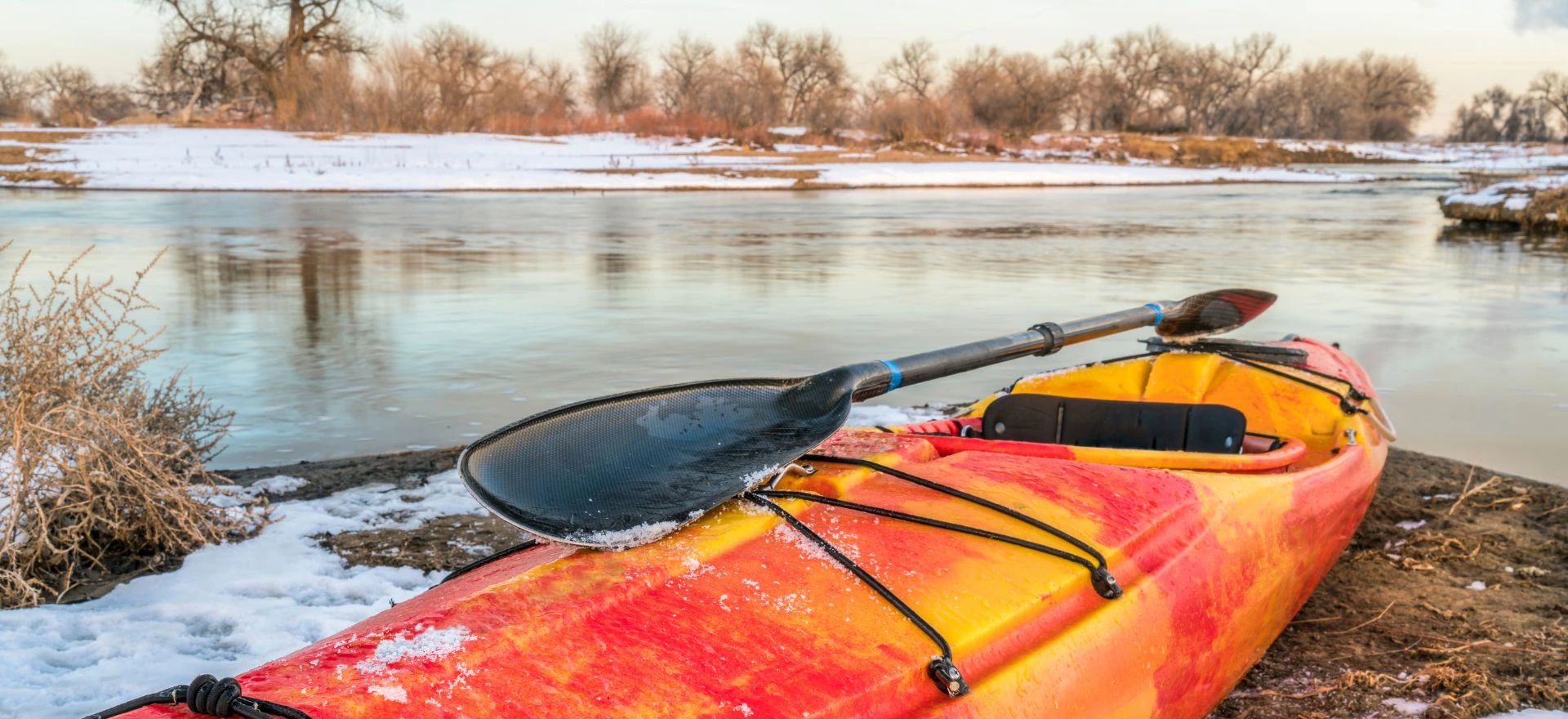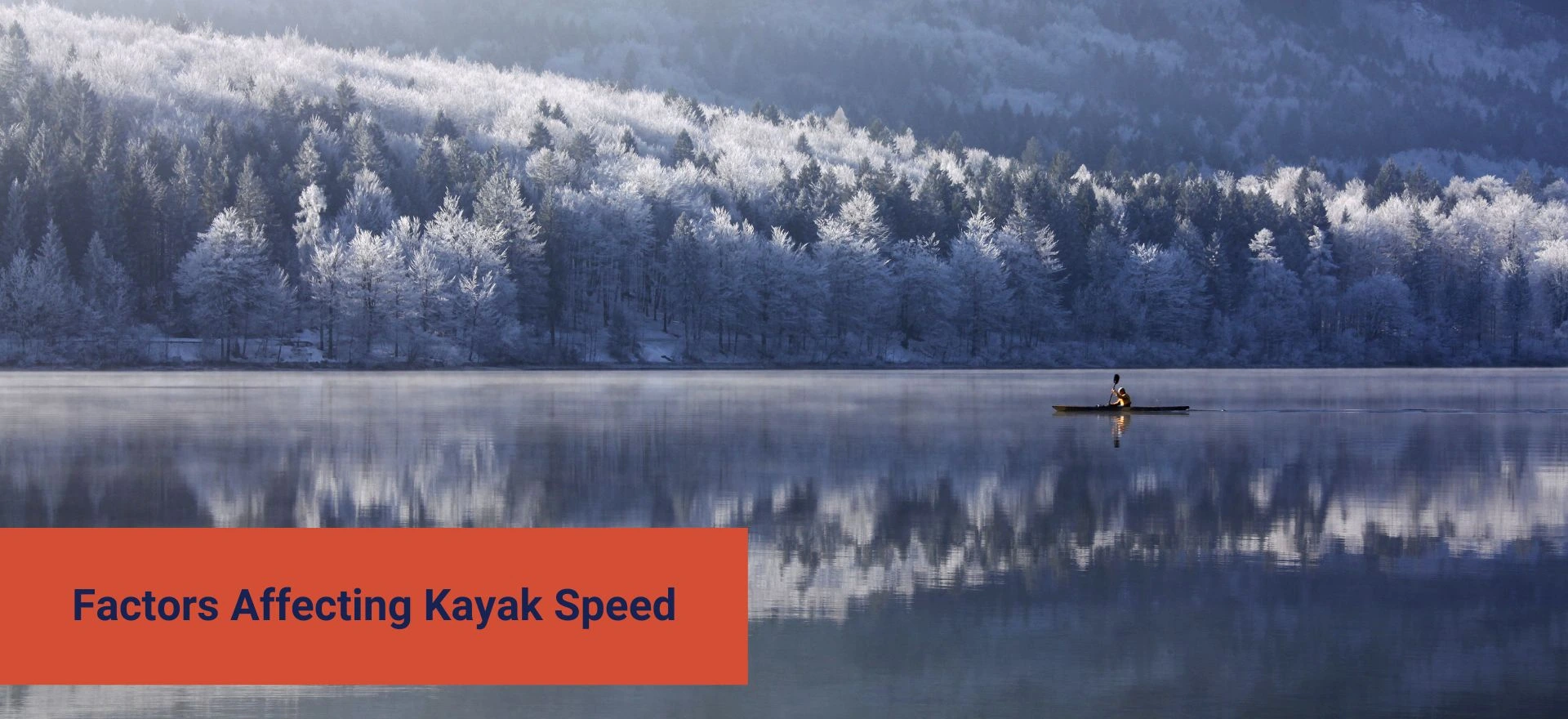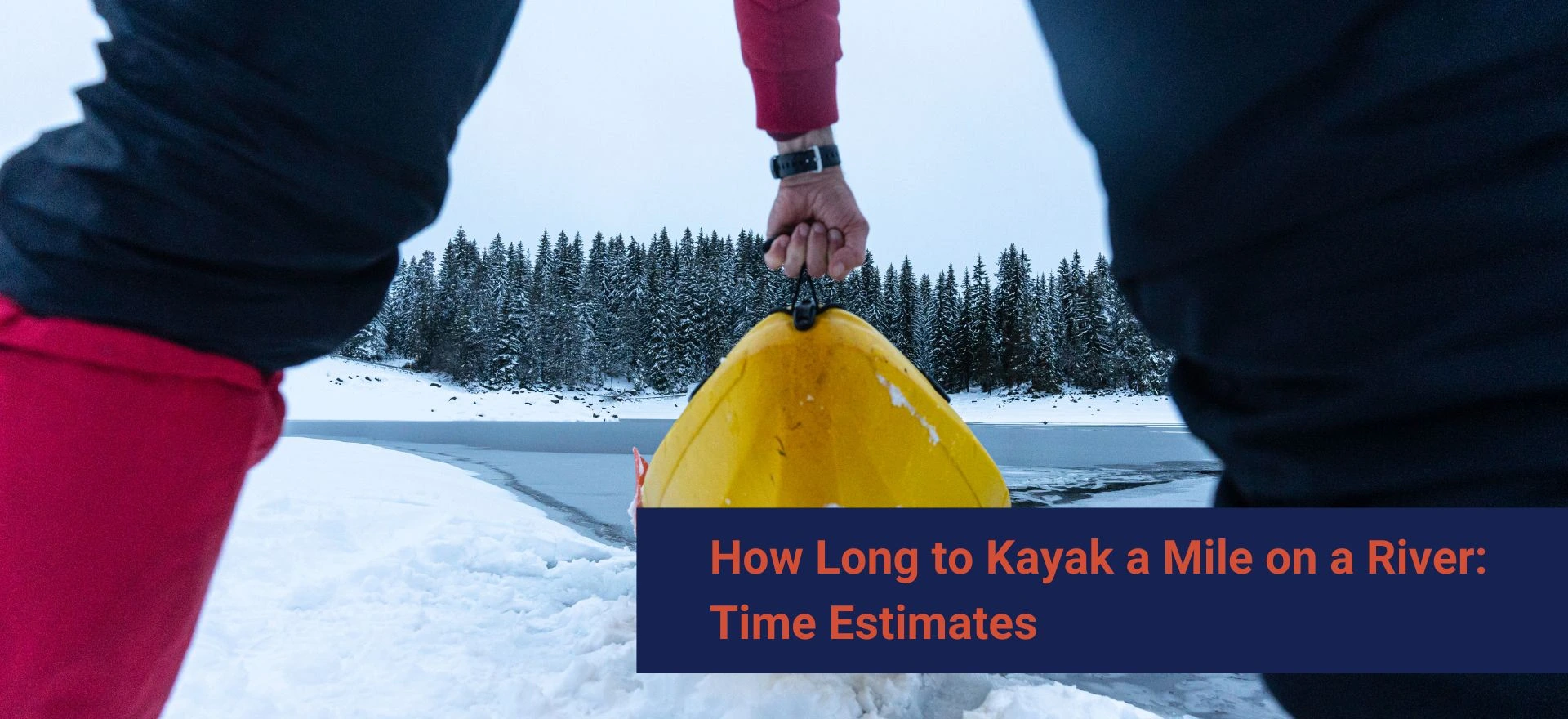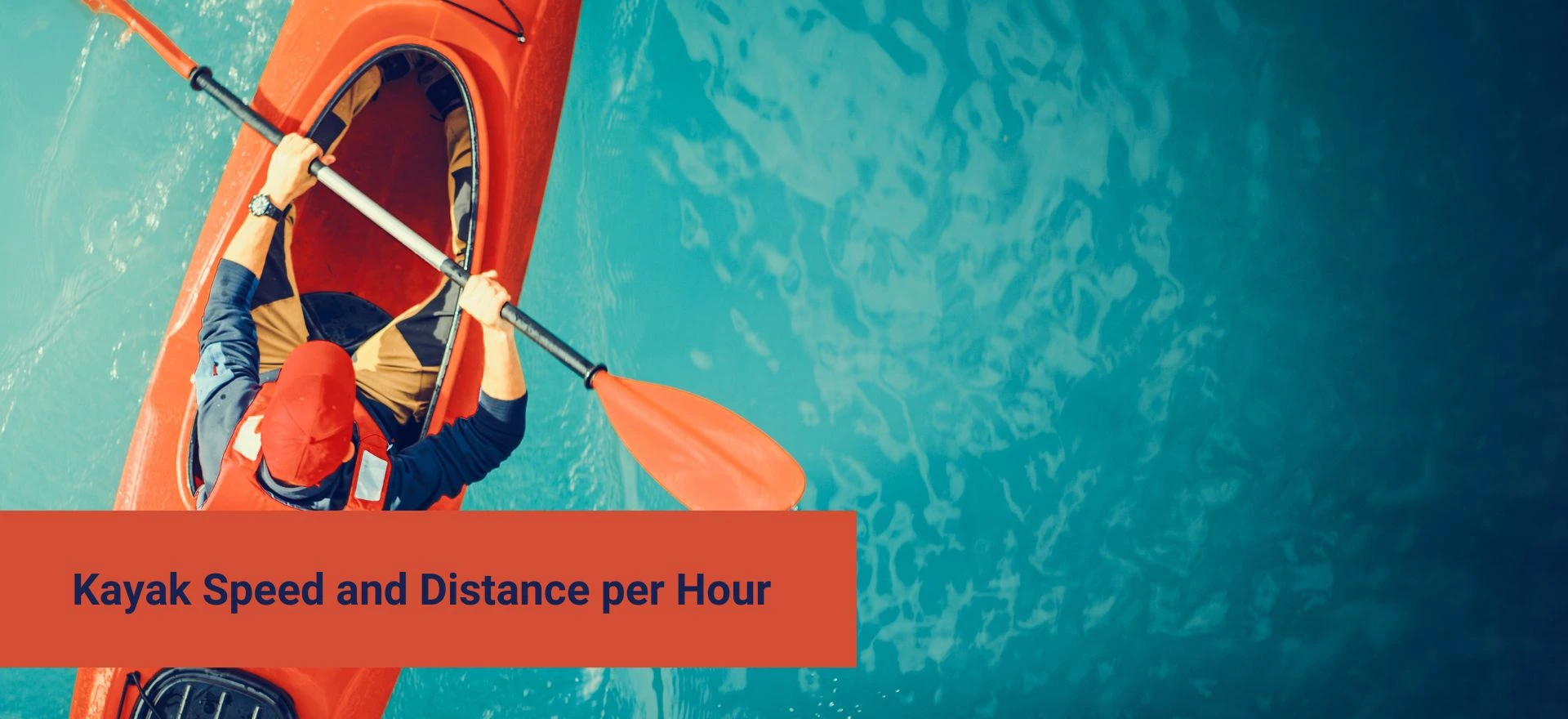How Long Does It Take to Kayak 1 Mile on a River?

When you set out for a kayaking trip on a river, one of the first questions you might have is, “How long does it take to kayak 1 mile on a river?” Understanding your average kayaking speed and how it impacts your trip time is crucial for planning. While the time it takes to kayak a mile can vary based on several factors, a few key aspects influence your kayak speed per mile, such as your paddling technique, the kayak you’re using, and the river conditions. Whether you’re embarking on a leisurely paddle or looking to challenge your kayaking performance, knowing the factors that affect kayaking pace per mile can help you manage expectations and enjoy the experience.
Let’s explore the different elements determining how long it takes to kayak 1 mile on a river and explore various techniques and strategies to improve your kayaking speed. Whether a beginner or an experienced kayaker, understanding how to improve kayaking speed and estimate your kayak trip time can make your river kayaking adventure more enjoyable and efficient. By the end of this article, you’ll be able to calculate your paddling efficiency and plan your kayaking trips with greater precision.
Average Kayaking Speed: What to Expect
When kayaking on a river, your speed will primarily depend on your skill level, your kayak, and the water conditions. Generally, the average paddling speed for a recreational kayaker on calm, flat water ranges from 2 to 3 miles per hour (mph). However, river kayaking speed can differ significantly due to water currents, obstacles, and whether you’re kayaking upstream or downstream. Your kayak speed per mile can be significantly faster on a river with a steady current than on flat water.
On average, it takes most kayakers about 20 to 30 minutes to kayak 1 mile on a river with moderate current. This time can vary depending on the intensity of the current, the type of kayak you’re using, and your paddling efficiency. If you’re kayaking on a slow-moving river or in an area with little current, your speed will align more closely with the average on calm water. However, if you’re paddling downstream, your speed may increase due to the current assisting your movement, potentially reducing your time per mile.
Factors Affecting Kayak Speed

While average kayaking speed can provide a basic estimate, several factors affect how long it will take you to kayak a mile on a river. These factors should improve kayaking distance per hour and help you optimize your performance.
1. River Conditions and Current
The condition of the river plays a crucial role in determining your kayaking speed. Rivers with strong currents can significantly increase your speed, allowing you to cover distances in less time. River kayaking speed is usually faster when paddling downstream, where the current helps propel you forward. On the other hand, if you’re kayaking upstream or against the current, your speed will be reduced, and it may take longer to kayak 1 mile. Your kayak trip time estimation should account for the additional effort required to paddle against the current.
2. Paddling Techniques for Speed
Your paddling technique can significantly impact your kayaking performance. Efficient paddling reduces fatigue and increases your kayak performance metrics, allowing you to kayak faster. Key techniques that improve paddling efficiency include:
- Using your whole body: Instead of relying solely on your arms, engage your core, back, and legs to generate power. This reduces strain on your arms and increases your paddling efficiency.
- Smooth and consistent strokes: Avoid splashing too much water. Smooth, controlled strokes allow for a more efficient transfer of power and a faster pace.
- Proper timing and rhythm: Maintaining a consistent paddling rhythm helps you keep your kayak moving steadily, reducing energy expenditure.
3. Kayak Type and Speed
Different kayak types are designed for varying performance levels, with some optimized for speed and others for stability and comfort. Kayak types and speed are closely related, as the shape and material of your kayak can significantly impact your overall speed. For example:
- Recreational kayaks are generally broader and more stable but tend to be slower than narrower, more streamlined designs.
- Touring kayaks are longer and designed for distance, offering better speed and efficiency on calm and moving water.
- Racing kayaks are narrow and lightweight, designed to achieve high speeds with minimal effort.
If you aim to improve kayaking speed, consider using a kayak designed for performance, such as a touring or racing kayak, especially if you plan on kayaking long distances.
4. Physical Fitness and Technique
Physical fitness also plays a vital role in how quickly you can kayak 1 mile on a river. Improving kayaking speed involves building endurance and strength, particularly in your upper body, core, and arms. Regular paddling workouts and strength training exercises will help improve your overall kayaking performance and reduce fatigue during long trips.
A more fit and experienced kayaker will naturally be able to maintain a higher average paddling speed and paddle longer distances with less effort.
How Long to Kayak a Mile on a River: Time Estimates

Based on various conditions, estimating how long it will take you to kayak 1 mile on a river is helpful. The table below summarizes general estimates for different types of kayaking conditions:

Remember that these estimates can vary significantly depending on the factors we’ve discussed, such as your paddling efficiency, kayak type, and physical fitness. On a river kayaking speed chart, you’ll notice that current, technique, and fitness are the three most important variables in determining how long it will take to kayak a mile.
Improving Kayak Speed and Efficiency
If you’re looking to improve your kayaking speed, here are some additional strategies to help you increase your kayak performance metrics:
- Practice interval training: Incorporating short bursts of high-speed paddling followed by rest intervals can build strength and speed over time.
- Refine your stroke technique: Focus on efficient, smooth strokes to reduce drag and fatigue.
- Increase core strength: A strong core allows you to paddle more efficiently and with less effort and helps with balance, particularly when moving water.
Kayak Speed and Distance per Hour

The key for those looking to estimate how far they can kayak in an hour is understanding your average kayaking speed. Depending on river conditions and paddling techniques, most recreational kayakers can cover 2 to 4 miles per hour. This means kayaking a mile under normal conditions will take 15 to 30 minutes.
For more experienced kayakers, particularly those using performance kayaks or paddling downstream, the speed may increase to 5 miles per hour or more, reducing the time required to kayak a mile.
Conclusion: Plan Your River Kayaking Trip with Confidence
Understanding how long it takes to kayak 1 mile on a river is essential for any kayaker, whether you are just starting or looking to improve your performance. By considering the factors affecting kayak speed, such as current, paddling technique, kayak type, and fitness, you can better estimate your trip time and plan accordingly.
At Blazin Paddles, we offer self-guided kayak tours and guided river kayaking experiences tailored to all skill levels. Whether you’re looking to improve your kayaking speed or enjoy a peaceful day on the river, our tours provide the perfect opportunity to enhance your skills and enjoy the beauty of nature.
Visit us at Blazin Paddles to learn more about our kayak tours, explore Las Vegas kayak tours, and start your river kayaking adventure today!

